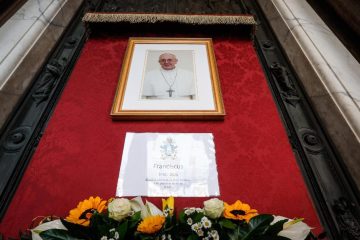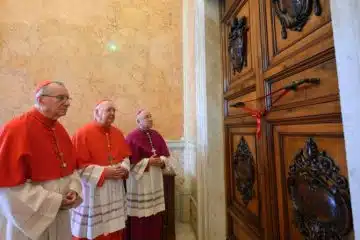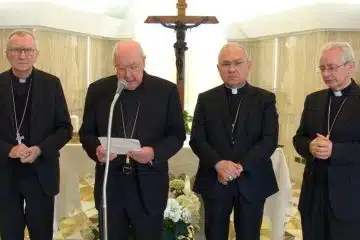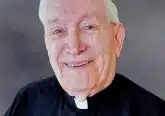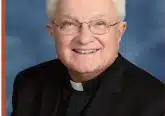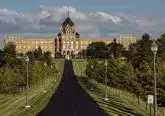AOC Bicentennial: missionaries of the precious blood
Catholic life in Mercer, Auglaize and Shelby counties is inseparable from its German heritage and the Missionaries of the Precious Blood, both of which continue to leave their mark on the Land of the Cross-Tipped Churches. During the episcopacy of Archbishop John B. Purcell (1833-1883), the archdiocese saw a massive increase in religious communities. Traveling primarily from Europe, they worked to serve the spiritual and material needs of their fellow immigrants.
On Dec. 31, 1843, Father Francis de Sales Brunner, C.PP.S. arrived in Ohio from Germany along with seven priests and six brothers (likely seminarians). Father Brunner was a member of the Congregation of the Precious Blood, a community founded in 1815 by the now-canonized Father Gaspar del Bufalo. These missionaries were sent to the northern parts of Ohio where large numbers of Germans had settled. Father Brunner and his men first went to St. Alphonse Church in Peru, OH. Soon after, they moved their headquarters to Minster.
To aid their work, in July 1844, the Sisters of the Precious Blood, who were founded in Switzerland in 1834 by Maria Anna Brunner, Father Brunner’s mother, joined them. The sisters had several convents in Ohio and Indiana, and their motherhouse was moved in 1874 to Maria Stein, where it remained until 1923, when it was moved to Dayton.
The early decades of the Congregation were marked by tremendous growth as they took on parishes. They purchased land in Thompson, OH, for a seminary, but they lacked proper educational structure and needed reform. Father Joseph Dwenger, who was educated at the seminary in Cincinnati, became the seminary’s rector following his ordination. He moved the seminary to the former Emlen Institute, a school for African Americans, in Carthagena. He named it St. Charles Seminary. There, the Congregation educated hundreds of members.
Theses religious men and women eventually separated administrative duties and leadership, and the sisters established independence in 1887. In 1875, Father J.M. Gartner donated his extensive relic collection to Maria Stein, beginning their relic collection. To this day Maria Stein’s Shrine of the Holy Relics is one of the largest in the world. The sisters relinquished its management in 2017, but their legacy carries on.
The last decades of the 19th Century and early ones of the 20th Century brought with them an expansion of the Missionaries of the Precious Blood to schools and parishes in the Midwest. The charism of the community, as established by St. Gaspar, is to preach parish missions. But in America, the greatest need was for parish work and education. The Missionaries have promoted their charism through many publications, and several members have published devotionals.
Alongside most religious communities in the mid-20th Century, the Missionaries discerned a call to serve in Central and South America. Both men and women traveled south to teach and serve the material needs of the people there, which they continue to do this day. In 1965, the American Province, which encompassed the entire country, was divided into three provinces. Now there are two: Cincinnati and Kansas City.
Members of the Missionaries of the Precious Blood and Sisters of the Precious Blood continue their ministry begun in the U.S. 177 years ago through prayer before the Blessed Sacrament, proclaiming the love and healing of the Blood of Jesus, and ministering to and working alongside the laity in their care.
This article appeared in the February 2021 edition of The Catholic Telegraph Magazine. For your complimentary subscription, click here.


